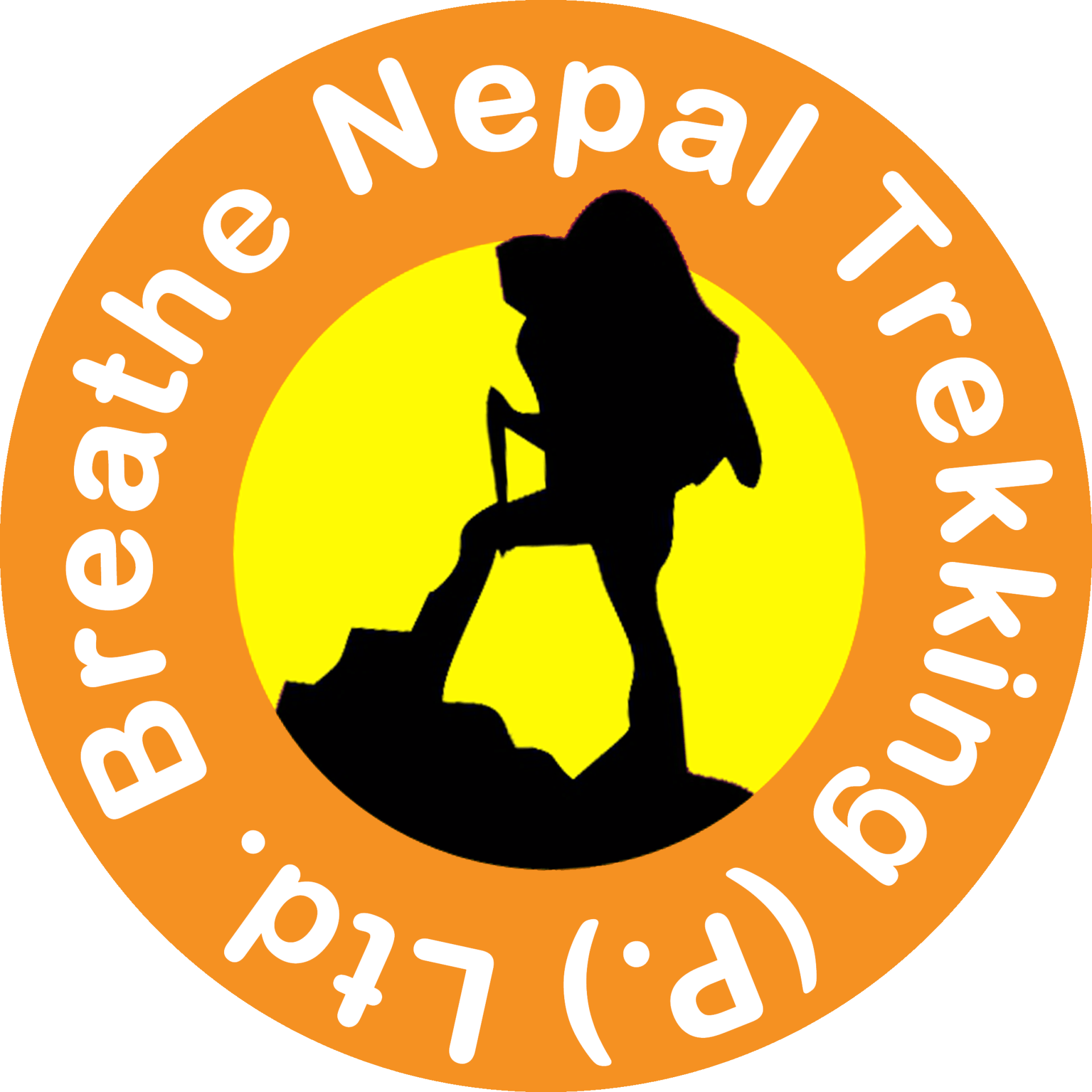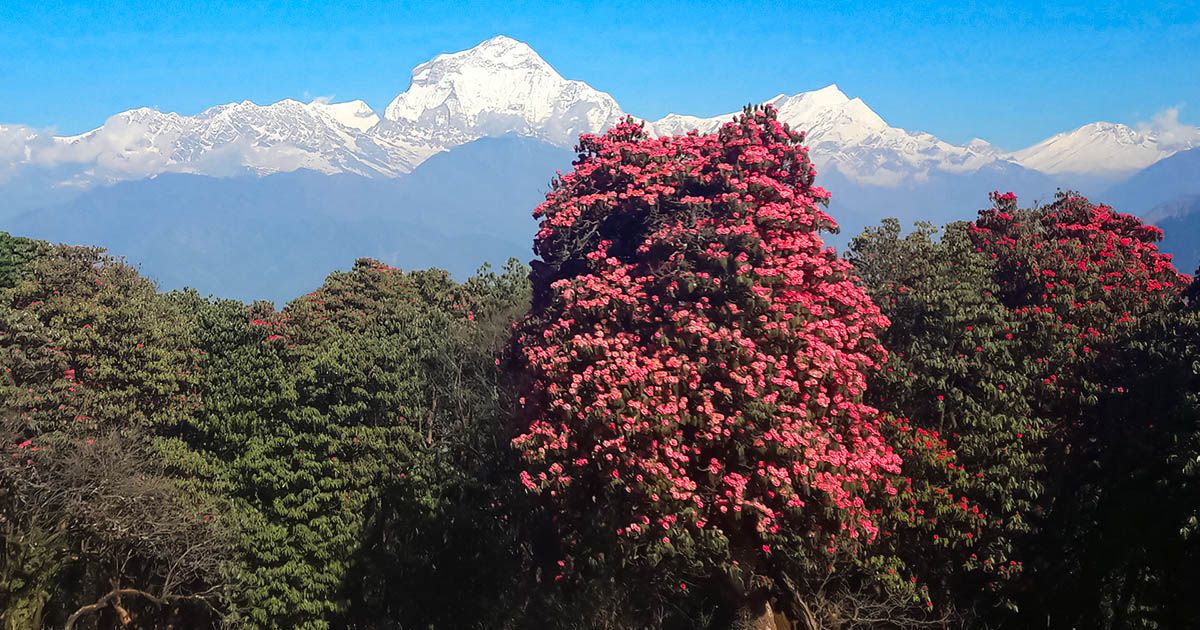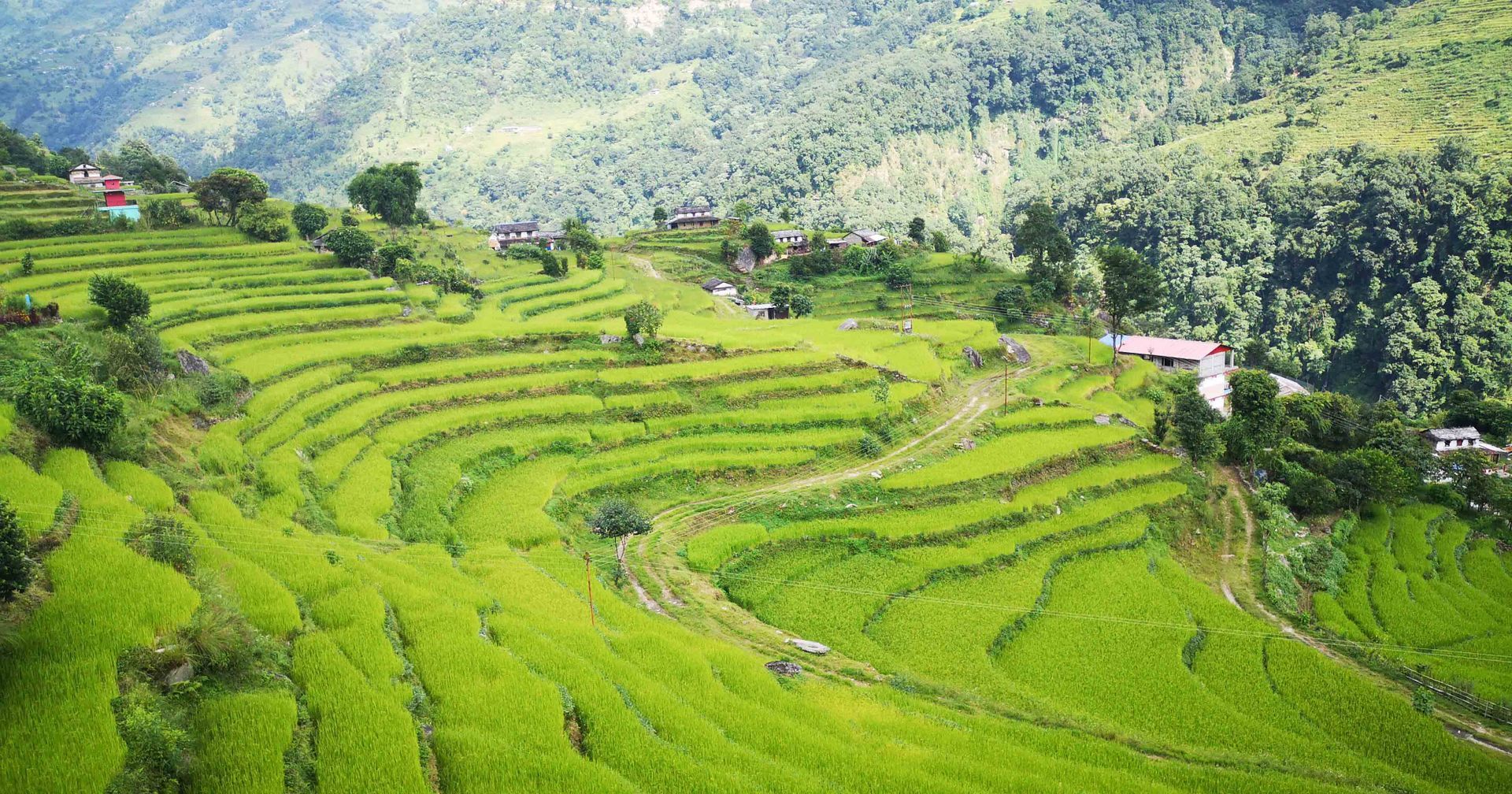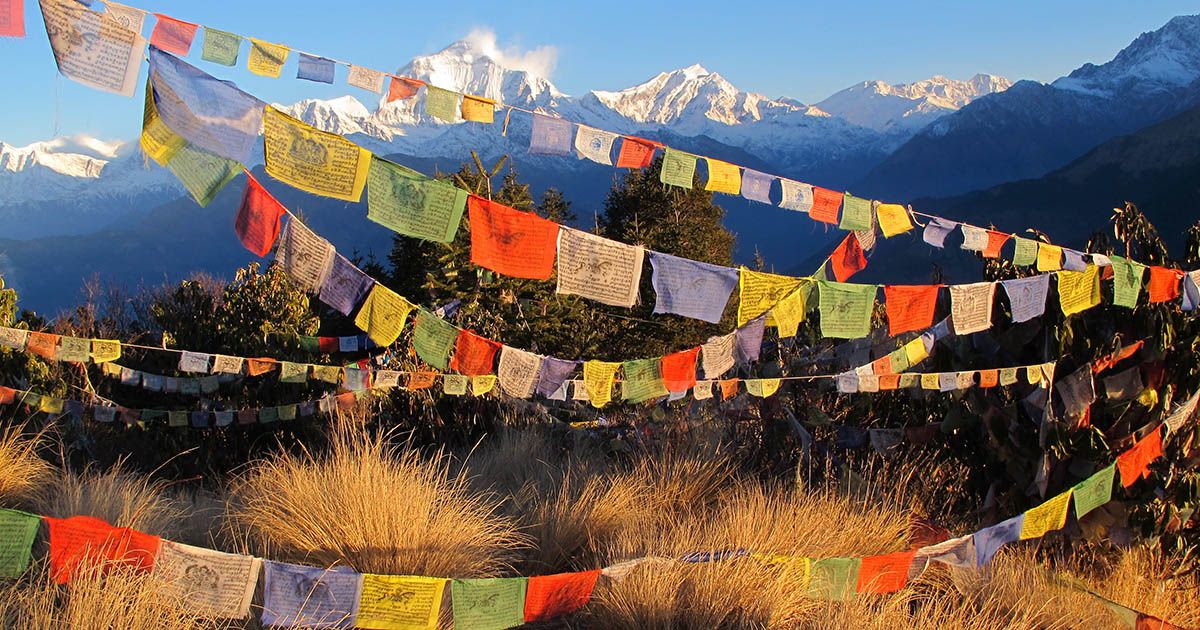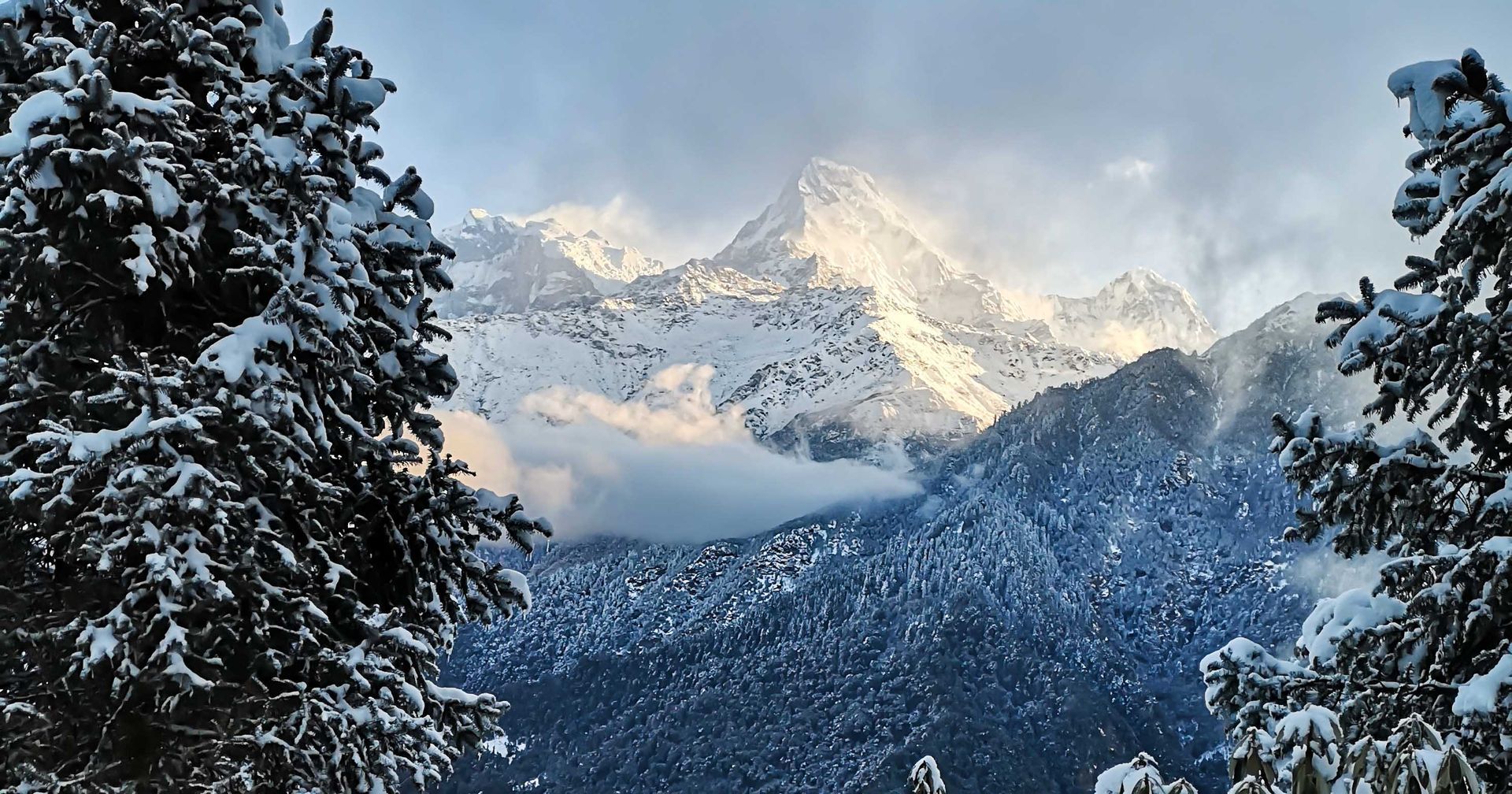Guide To Annapurna Trekking Weather
Jan 23, 2023
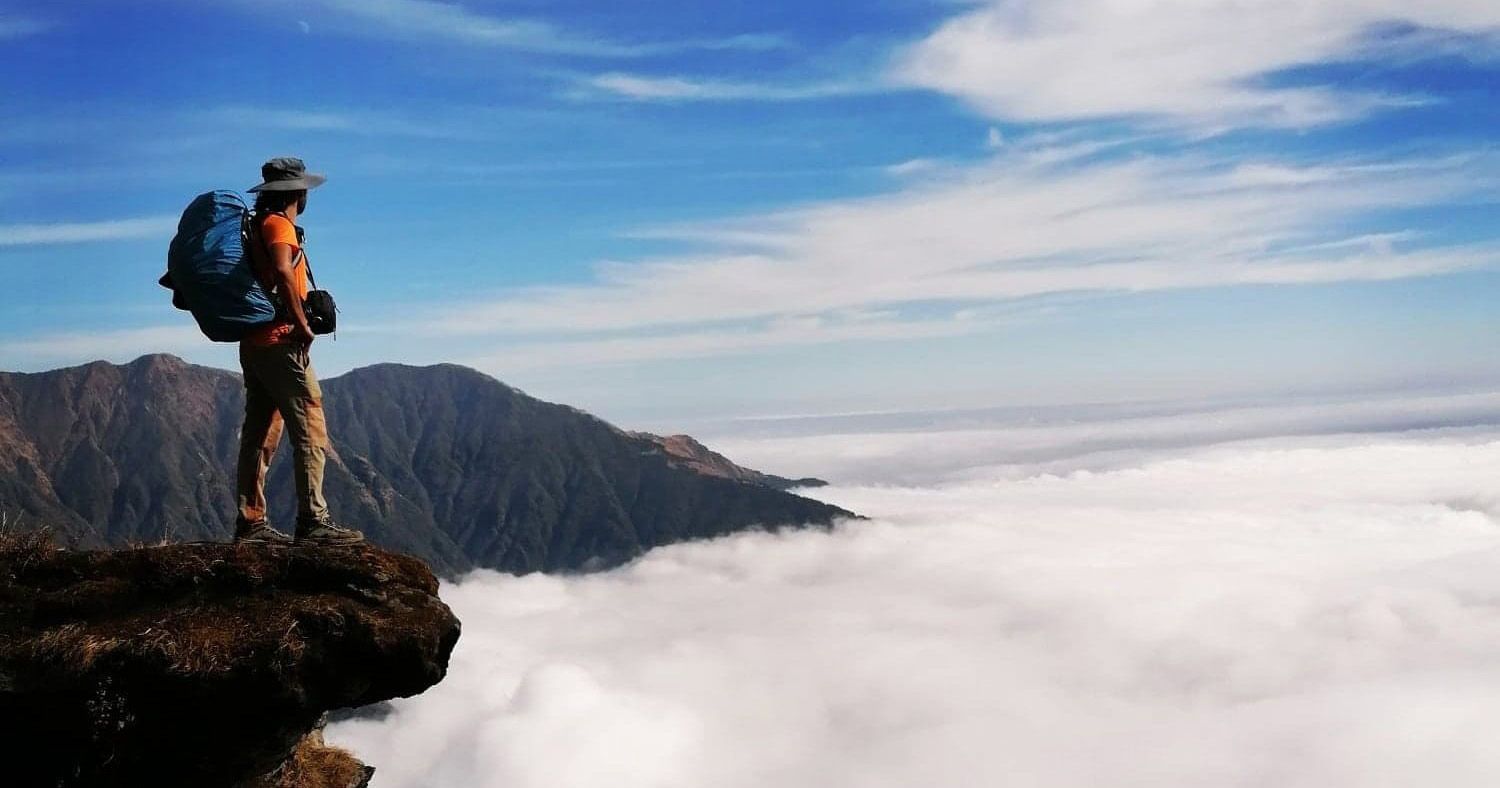
What to Expect and How to Plan Your Trek
Hey there! If you're planning a trek in the Annapurna region, you'll want to pay attention to the weather, as it can vary depending on the season and altitude. Here's a quick guide about what to expect and how to plan for the best trekking experience.
Spring (March to May) is ideal for trekking in the Annapurna region as the weather is warm and sunny. Lower elevations appear drier than in the trekking season (October to December), with less vegetation due to the winter. However, higher elevations boast a display of blooming rhododendron forests. This is an excellent opportunity to view wildflowers, exclusive to spring, and take in clear mountain views. However, dry weather in spring can increase the risk of forest fires, so it's crucial to exercise caution and avoid activities that could spark a fire.
Summer (June to August) is also a good time to visit. In the summer months, the monsoon rains bring a new level of lushness to the Annapurna region, making it an ideal time for trekkers who are interested in exploring the local flora and fauna. The scenery is green, vibrant, and the waterfalls along the trails are especially stunning. Due to high humidity, there is a possibility of encountering leeches in certain areas. It is advisable to take necessary precautions and wear leech-proof gear.
Autumn (September to November) is peak season for trekking in Annapurna region, with a revitalized landscape after the monsoon. The lower elevations are especially vibrant with new growth and fresh leaves, making it perfect for outdoor adventures and scenic hikes amid a colorful display of natural beauty. The warm weather and clear views make for ideal trekking conditions. Don't miss this stunning season where nature shines at its best!
Winter (December to February) is the chilliest season for trekking in Annapurna region, but it offers a stunning sight of the snowy mountains. The cold weather requires preparation with warm clothing, making it ideal for those who are up for a challenge and enjoy winter landscapes. With fewer crowds and clear skies, it's an opportunity to experience the serene beauty of the region in a unique way.
Regardless of the time of year, it is always recommended to hire a local guide when trekking in the Annapurna region. Local guides have extensive knowledge of the weather conditions and can advise on the best trekking routes and times based on current weather conditions. They also know the best places to take shelter or find alternate routes in case of inclement weather, and are trained to handle emergencies and unexpected situations.
Further on in this blog post you will find information about the seasonal weather conditions for the most popular trekking routes in the Annapurna region, as well as Pokhara, which is the starting point for most treks.
So, take a moment to relax,
breathe in, breathe out and enjoy our post. And, when you're ready, set off to discover the beauty of Nepal.
Best Time to Hike on Poon Hill Trail
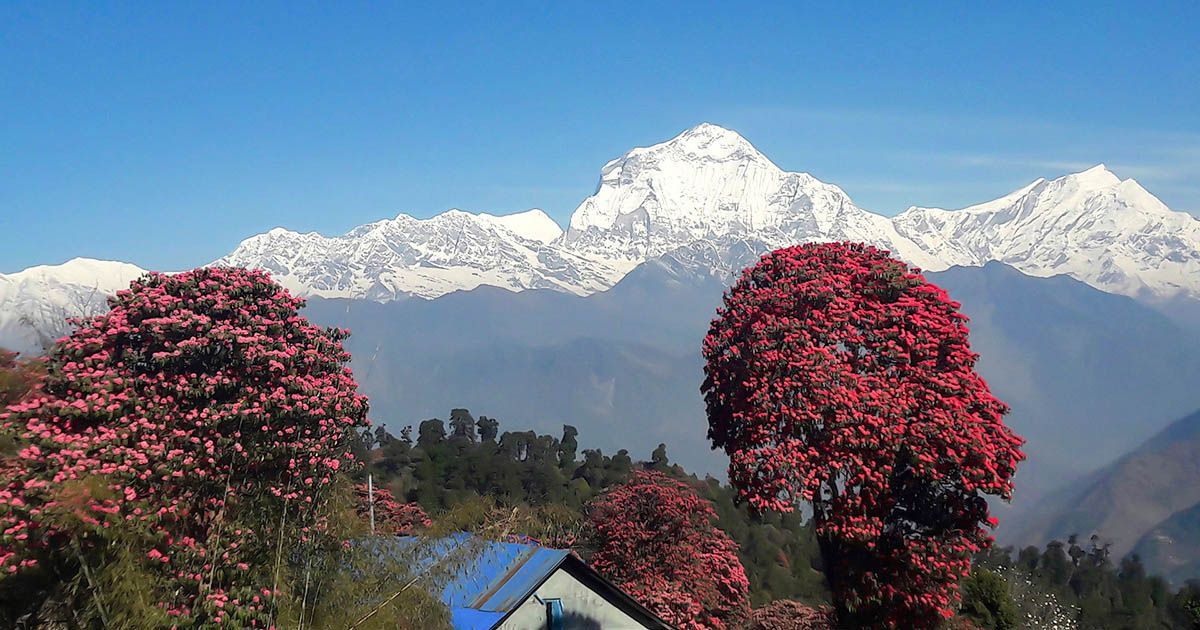
The
Poon Hill Trek, a well-loved trek in Nepal, boasts breathtaking views of the Annapurna mountain range. It's relatively easy, taking 3 to 7 days to complete. Keep in mind that weather on the trek can change significantly depending on the season.
-
Trekking Seasons - Poon Hill
During the spring months (March-May), the temperature on the Poon Hill trek ranges from 5°C (41°F) to 20°C (68°F) during the day and can drop to -5°C (23°F) at night. The weather is typically clear and sunny during the day, making it the perfect time to see the beautiful wildflowers that bloom in the region. However, it can be chilly at night, so it is important to bring warm clothing.
During the summer months (June-August), the temperature on the Poon Hill trek ranges from 15°C (59°F) to 25°C (77°F) during the day and can drop to 5°C (41°F) at night. The monsoon season starts around June and the region experiences heavy rainfall, making the trek quite challenging. It is best to avoid trekking during the monsoon season.
Autumn (September-November) is the best time to trek on Poon Hill as the temperature ranges from 5°C (41°F) to 20°C (68°F) during the day and can drop to -5°C (23°F) at night. The weather is clear and dry, making it the perfect time to see the beautiful autumn foliage. This is the most popular time to trek on Poon Hill, so expect to see a lot of other trekkers on the trail.
During the winter months (December-February), the temperature on the Poon Hill trek ranges from -5°C (23°F) to 5°C (41°F) during the day and can drop to -10°C (14°F) at night. The weather is typically cold and snowy, making it a challenging time to trek. Only trekkers with a local guide should attempt the trek during the winter months.
Regardless of the season, it's always important to be prepared for changing weather conditions and to pack accordingly. You can check here the weather forecast for Poon Hill.
From Spring to Winter on Annapurna Base Camp Trek
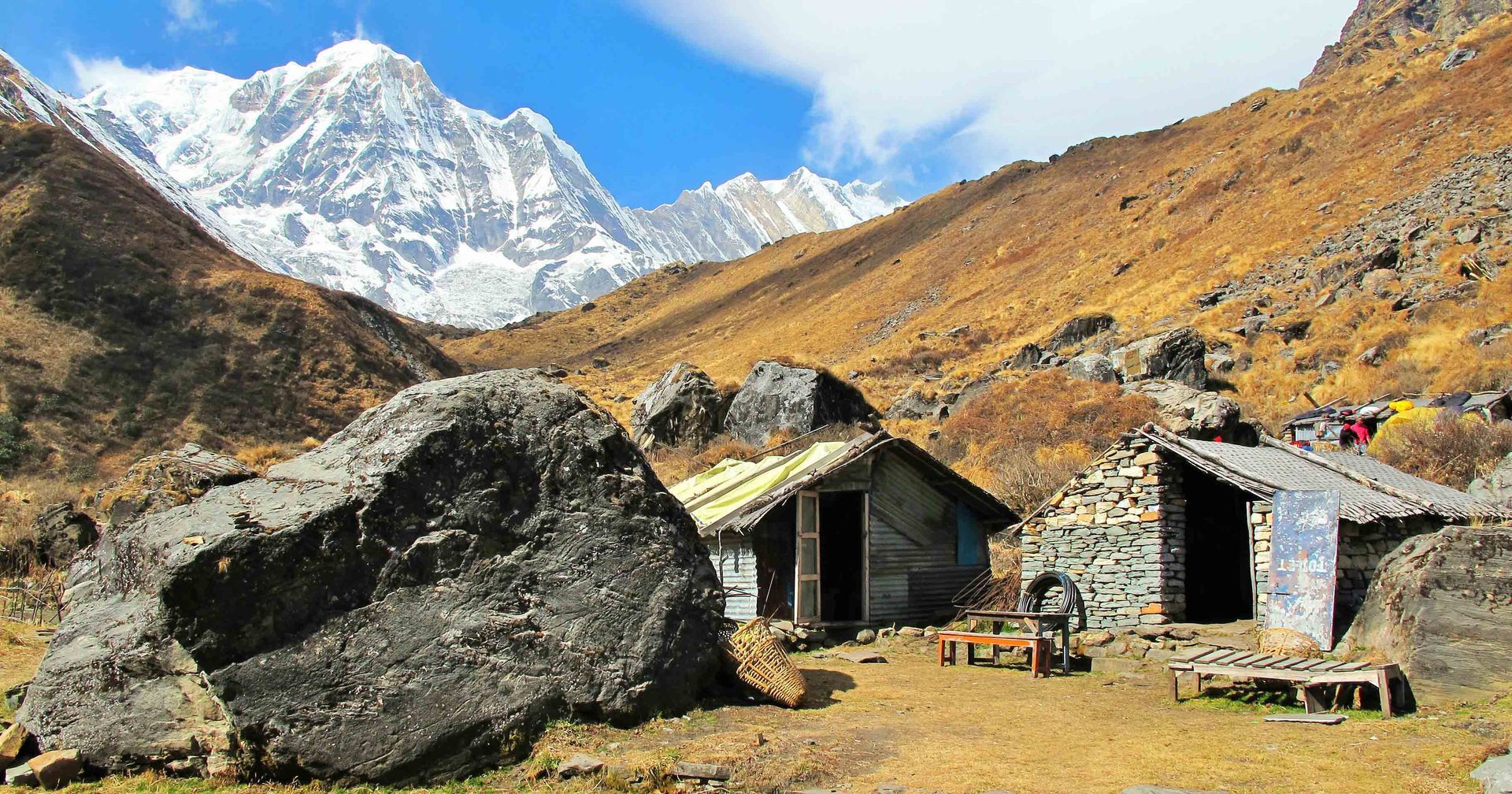
The
Annapurna Base Camp Trek, a sought-after trek in Nepal's Himalayas, leads trekkers to the foot of the Annapurna massif. Usually done from September to May, the best weather is experienced from October to November and March to April. The trek can take anywhere from 7 to 12 days to complete.
-
Trekking Seasons - Annapurna Base Camp
During the autumn months (September-November), the weather is generally clear and sunny, with cool temperatures in the mornings and evenings and warm temperatures during the day. Average temperatures during this time range from around 5-15 °C (41-59°F) at lower elevations to -5 to 5°C (23-41°F) at higher elevations.
In winter (December-February), the weather is colder and snowfall is common at higher elevations. Average temperatures during this time range from -10 to 5°C (14-41°F) at lower elevations and -20 to -10°C (-4 to 14°F) at higher elevations. It is important to note that trekking in these months can be challenging due to the cold temperatures and snow-covered trails.
In spring (March-May), the weather starts to warm up again and the snow begins to melt, making for good trekking conditions. Average temperatures during this time range from 5-15°C (41-59°F) at lower elevations and -5 to 5°C (23-41°F) at higher elevations.
Summer (June to August) is generally warm during the day, with temperatures ranging from 10-20°C (50-68°F). At night, temperatures can drop to below freezing, with temperatures ranging from -10 to -5°C (14-23°F). It can be quite windy and cold at the base camp, so warm clothing is necessary. During this time, the region experiences heavy rainfall, which can make the trail muddy and slippery and can also cause landslides and flash floods. Trekkers should be prepared for these conditions by bringing proper rain gear and being mindful of the weather forecast before starting the trek.
It is important to note that the weather on the Annapurna Base Camp Trek can be unpredictable and can change quickly, so it is important to be prepared for all conditions and to check the forecast before embarking on the trek.
Four Seasons on Mardi Himal Trek
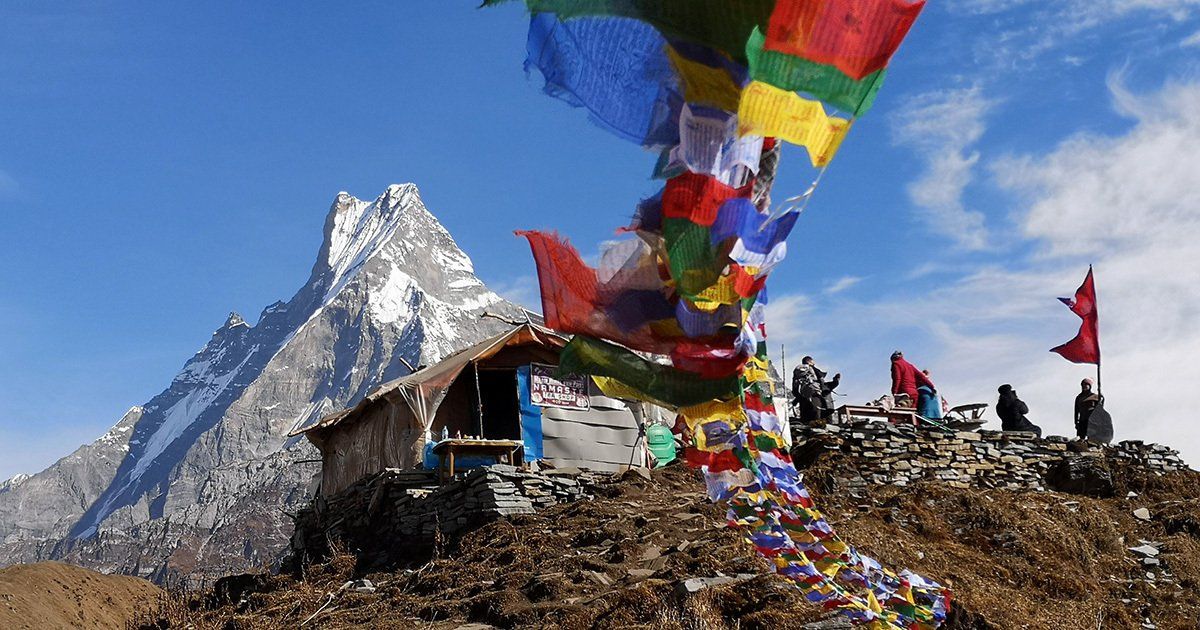
The
Mardi Himal Trek is a popular trek in the western region of Nepal.The trek offers a unique experience with breathtaking views of the Himalayas and a chance to experience the diverse weather conditions of the region. The trek can be done in different seasons, each with its own unique characteristics. It takes 5-8 days to complete the trek.
-
Trekking Seasons - Mardi Himal
Spring (March to May) is a great time to trek as the weather is mild and the mountain views are clear. The daytime temperature can reach up to 20°C (68°F) and can drop to as low as 5°C (41°F) at night. The rhododendron forests are in full bloom and the trek offers a beautiful display of wildflowers.
Summer (June to August) is the monsoon season in Nepal, and the Madri Himal trek is not typically done during this time as the trails can be muddy and the views are often obscured by clouds. The daytime temperature can reach up to 25°C (77°F ) and can drop to as low as 15°C (59°F) at night.
Autumn (September to November) is considered the best time to trek as the weather is mild, the mountain views are clear, and the colorful rhododendron forests are in bloom. The daytime temperature can reach up to 20°C (68°F) and can drop to as low as 5°C (41°F) at night. The trek offers a unique experience with a chance to see the changing leaves and vibrant colors of the fall season.
Winter (December to February) is the coldest season, and the trek is not typically done during this time as the trails can be icy and the views are often obscured by snow and clouds. The daytime temperature can reach up to 5°C (41°F) and can drop to as low as -10°C (14°F) at night.
Overall, the Mardi Himal Trek offers a unique experience with breathtaking views of the Himalayas and a chance to experience the diverse weather conditions of the region. The trek can be done in different seasons, each with its own unique characteristics. It is important to be prepared for changing weather conditions and to bring appropriate clothing and gear. Please check here the weather forecast for Mardi Himal Trek.
Journey Through the Seasons on Annapurna Circuit Trek
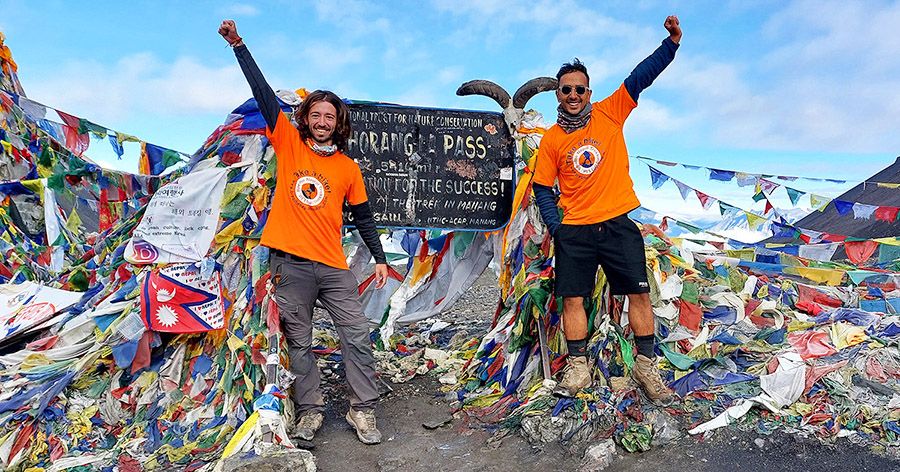
The
Annapurna Circuit Trek in Nepal is a highly favored trekking route, showcasing awe-inspiring vistas of the Annapurna mountain range. The duration of the trek ranges from 10 to 21 days, depending on the chosen itinerary, and passes through a variety of landscapes, from lush subtropical forests to arid alpine deserts.
-
Trekking Seasons - Annapurna Circuit
During the trekking season, which runs from September to November and March to May, the weather is generally mild. Daytime temperatures can range from 15 to 25°C (59 to 77°F) in the lower elevations and can drop to below freezing at night. Higher up on the trek, temperatures can drop to below -10°C (14°F) at night.
In the monsoon season, which runs from June to August, the weather is typically wet and the trails can be muddy and slippery. During this time, the temperature can range from 20 to 30°C (68 to 86°F) in the lower elevations. The higher up on the trek, the colder it will get, and temperatures can drop to below freezing at night.
The winter months, December to February, are the coldest and the least popular time to trek the Annapurna Circuit. During this time, temperatures can drop well below freezing at night, reaching as low as -20°C (-4°F) or lower at higher elevations. Snow and ice can also make the trail treacherous, making it more challenging to trek. Additionally, the trail may be closed or have limited access during the winter season due to snow and ice. The mountain passes can be impassable, and the risk of avalanches and landslides is higher.
It's important to note that the weather can change quickly and unexpectedly on the Annapurna Circuit Trek so it's essential to come prepared with appropriate clothing and gear. Be sure to pack warm layers, a waterproof jacket, and good-quality trekking boots. It's also a good idea to bring a hat, gloves, and sunglasses to protect yourself from the sun and wind.
Check here the weather forecast for Manang and Thorong La Pass.
Weather Patterns on Australian Camp Trek
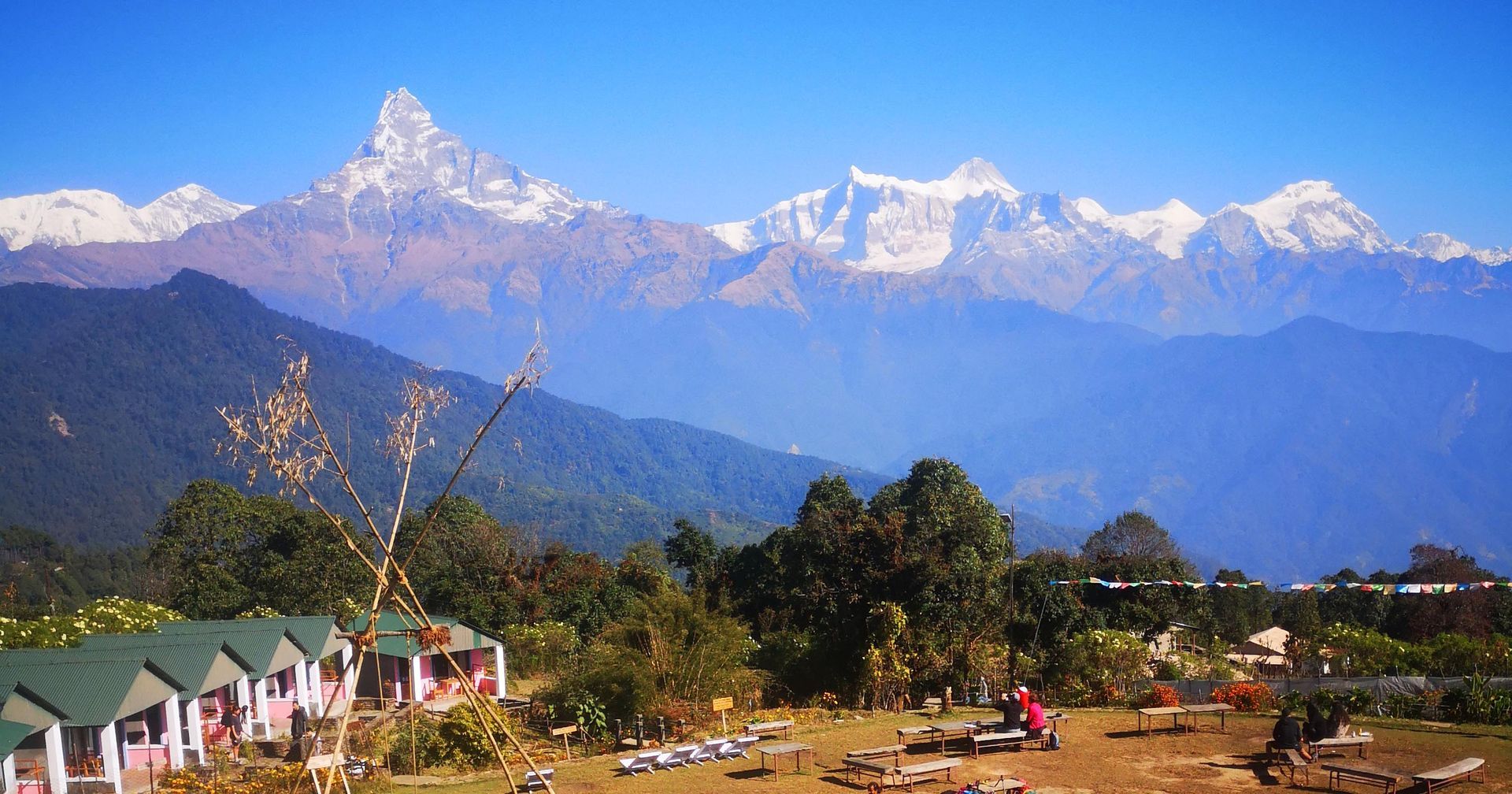
The
Australian Camp Trek
is known for its diverse and varied weather conditions throughout the year. The trek is a popular activity for adventure seekers and nature lovers alike, offering stunning views of the surrounding landscape and a chance to immerse oneself in the great outdoors. The trek can be completed in 1-3 days.
-
Trekking Seasons - Australian Camp & Dhampus
Summer (June-August) is the hottest season on the trek, with average temperatures ranging from 28-35°C (82-95°F). This season is characterized by high humidity and occasional thunderstorms.
The weather in autumn (September-November) is milder, with temperatures averaging between 20-25°C (68-77°F). This season is generally dry and comfortable for trekking.
Winter (December-February) is the coldest season on the trek, with temperatures ranging from 5-10°C (41-50°F). This season also sees the most rainfall, making it more challenging for trekking.
Spring (March-May) weather is similar to autumn, with temperatures averaging between 20-25°C (68-77°F). This season is characterized by clear, sunny days and comfortable temperatures, making it a great time for trekking.
It's important to note that temperatures can vary depending on the altitude and location on the trek, so it's always best to check the forecast before embarking on the Australian Camp & Dhampus. Additionally, it's essential to come prepared with the right clothing and gear to ensure a safe and enjoyable trek.
Check here the weather conditions in Dhampus/Australian Camp.
Exploring the Seasons in Pokhara City
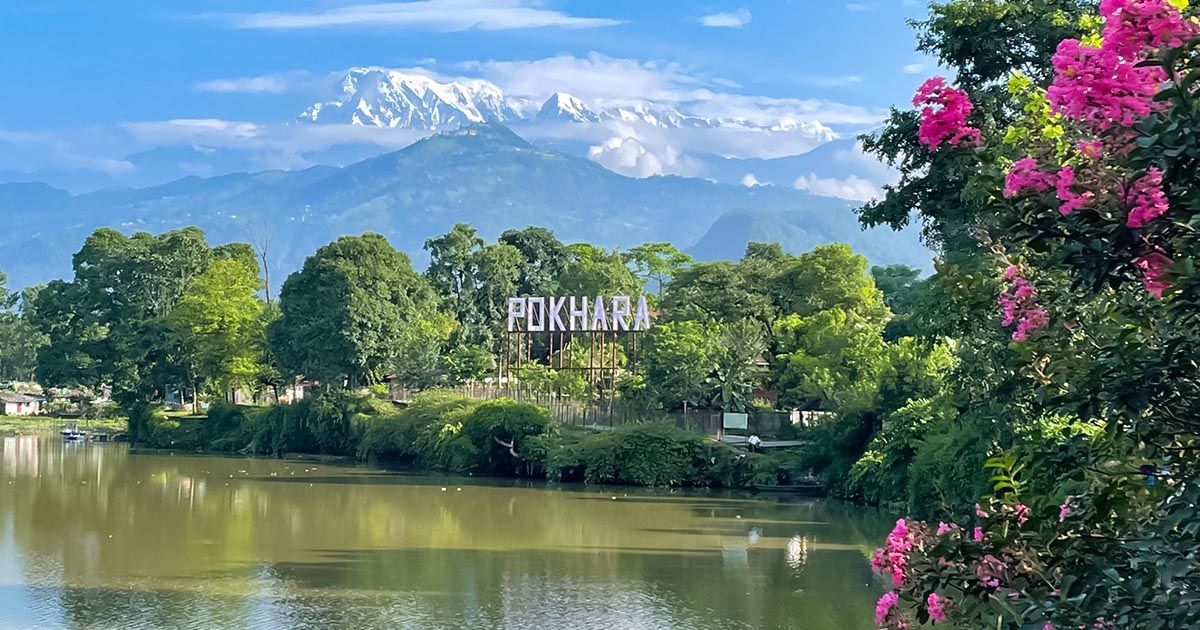
Pokhara is a city in Nepal that is known for its beautiful natural scenery and warm weather. The city is located in the foothills of the Himalayas, which means that the weather can vary greatly depending on the time of year.
-
Trekking Seasons - Pokhara
In the winter months (December-February), the temperature in Pokhara is quite cool, with average highs of around 15°C (59°F) and lows of around 5°C (41°F). During this time, it is not uncommon for there to be frost and even some light snowfall in the higher elevations surrounding the city. However, the city itself typically does not receive much snowfall.
In the spring (March-May), the temperature begins to warm up, with average highs of around 20°C (68°F) and lows of around 10°C (50°F). This is also the time of year when the city begins to see some rainfall, as the monsoon season is just around the corner.
The monsoon season in Pokhara typically runs from June to September, and during this time the city experiences heavy rainfall and high humidity. Average temperatures during this time are around 25°C (77°F) during the day and around 20°C (68°F) at night. Heavy rainfall can cause some flooding and landslides in the surrounding areas, so it is important to be prepared if you are planning to visit Pokhara during this time.
In autumn (October-November), the weather begins to dry out and cool down once again, with average temperatures similar to those in the spring. This is considered to be the best time to visit Pokhara, as the weather is pleasant and the scenery is beautiful.
Overall, the weather in Pokhara can be quite unpredictable, and it is important to be prepared for a range of conditions depending on the time of year. However, despite the variability, Pokhara is a beautiful and welcoming city that is well worth a visit.
Access the weather forecast for Pokhara here.
